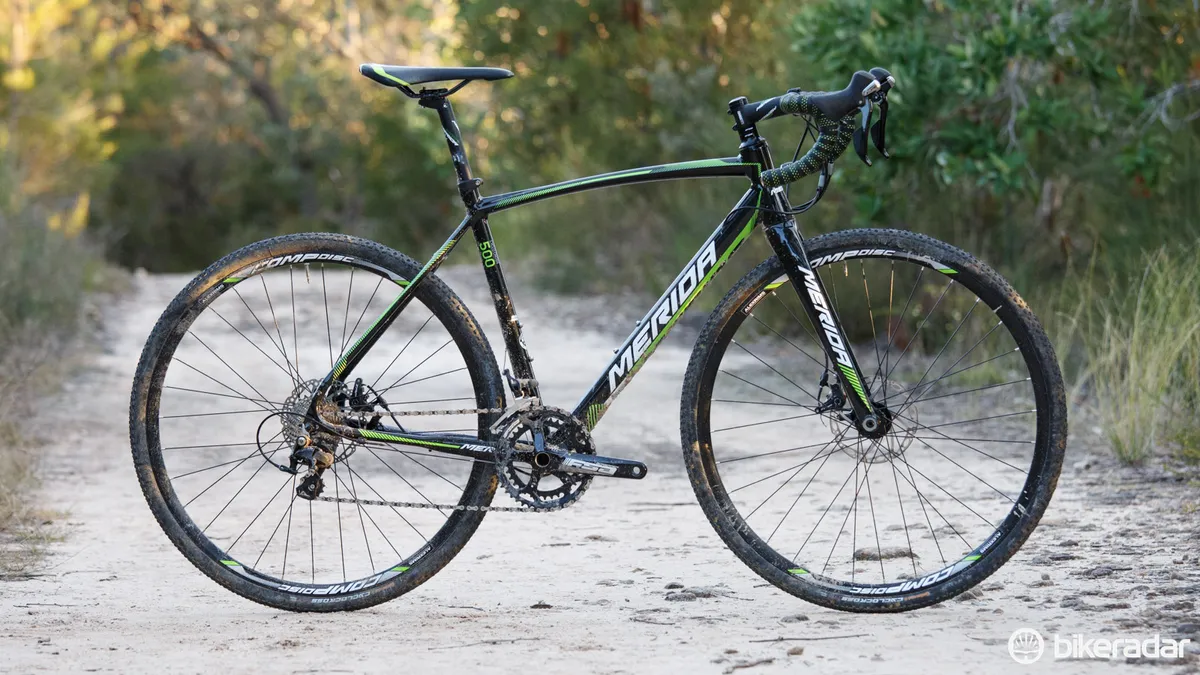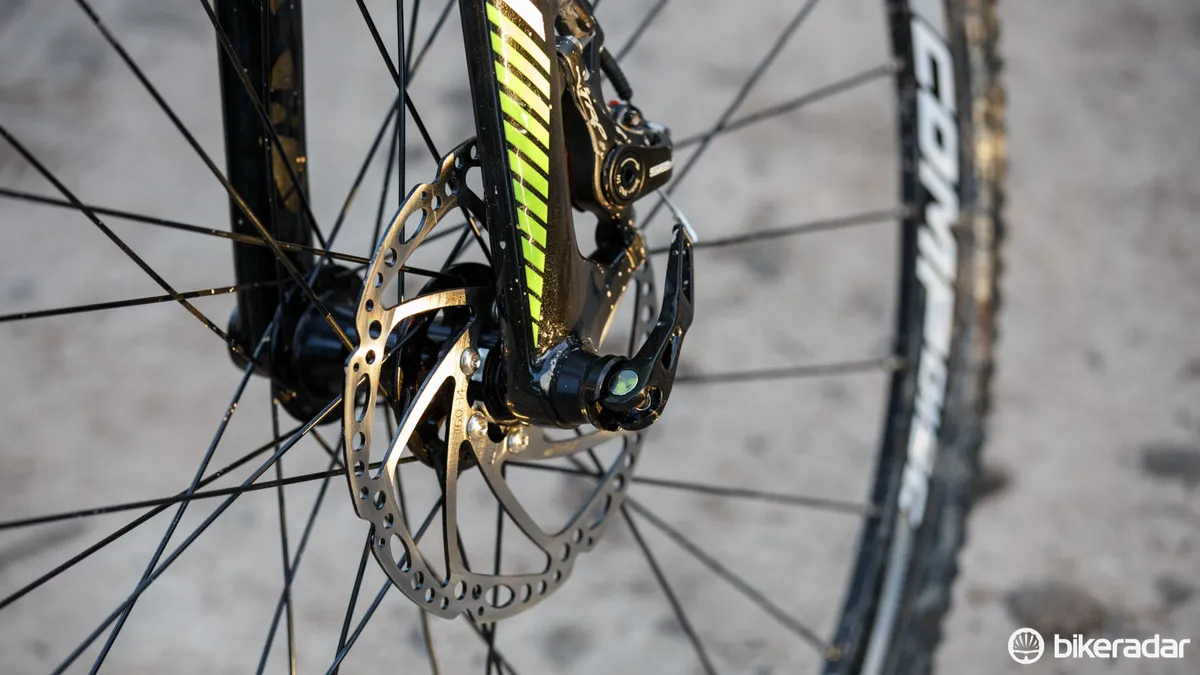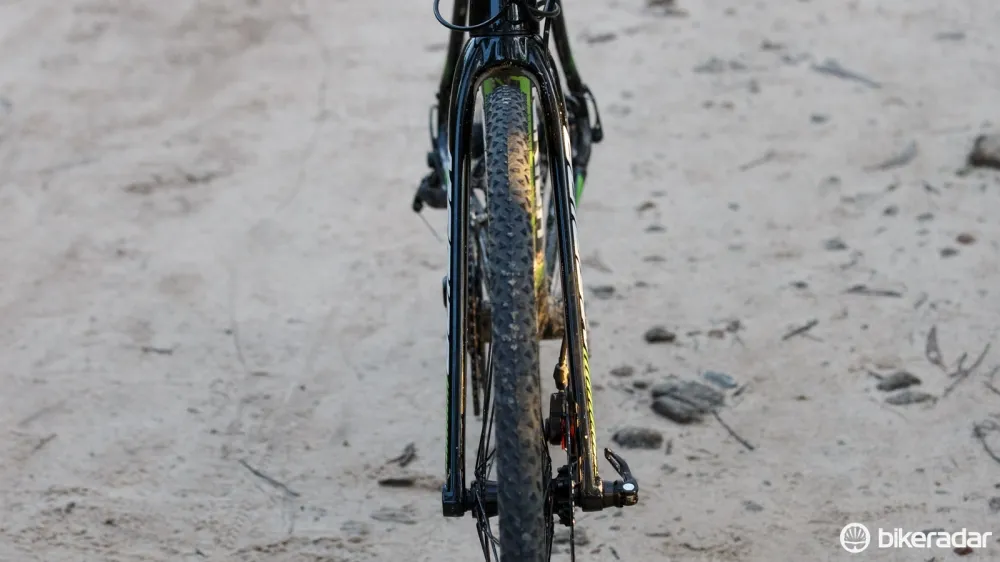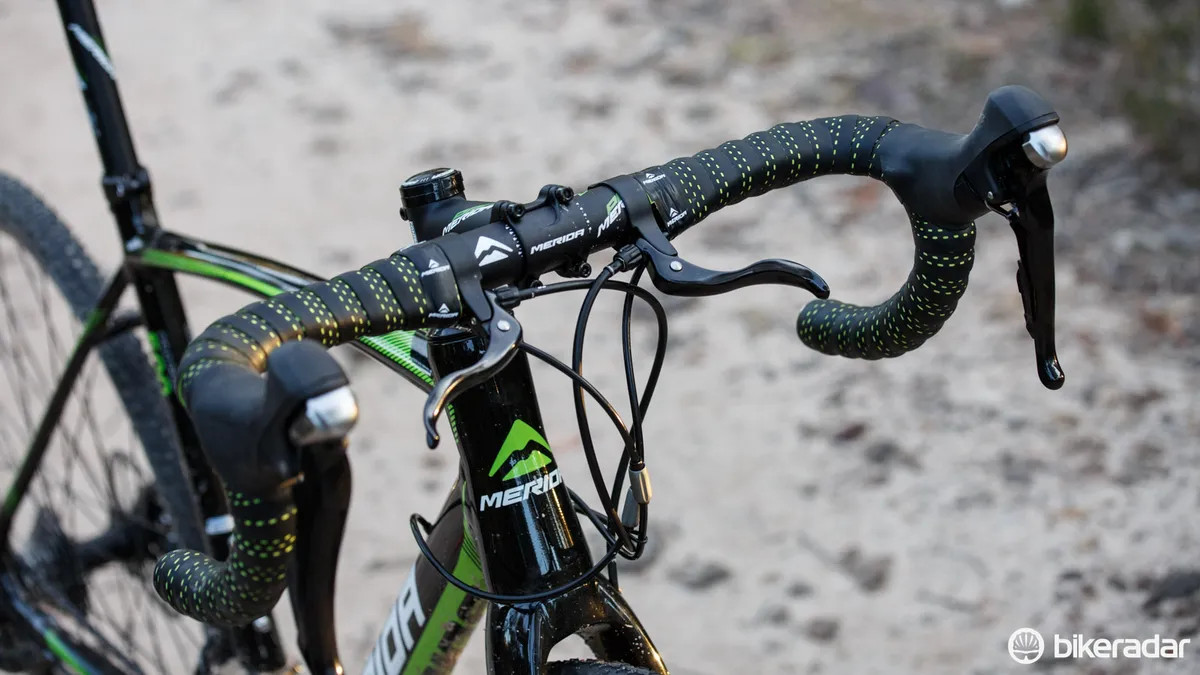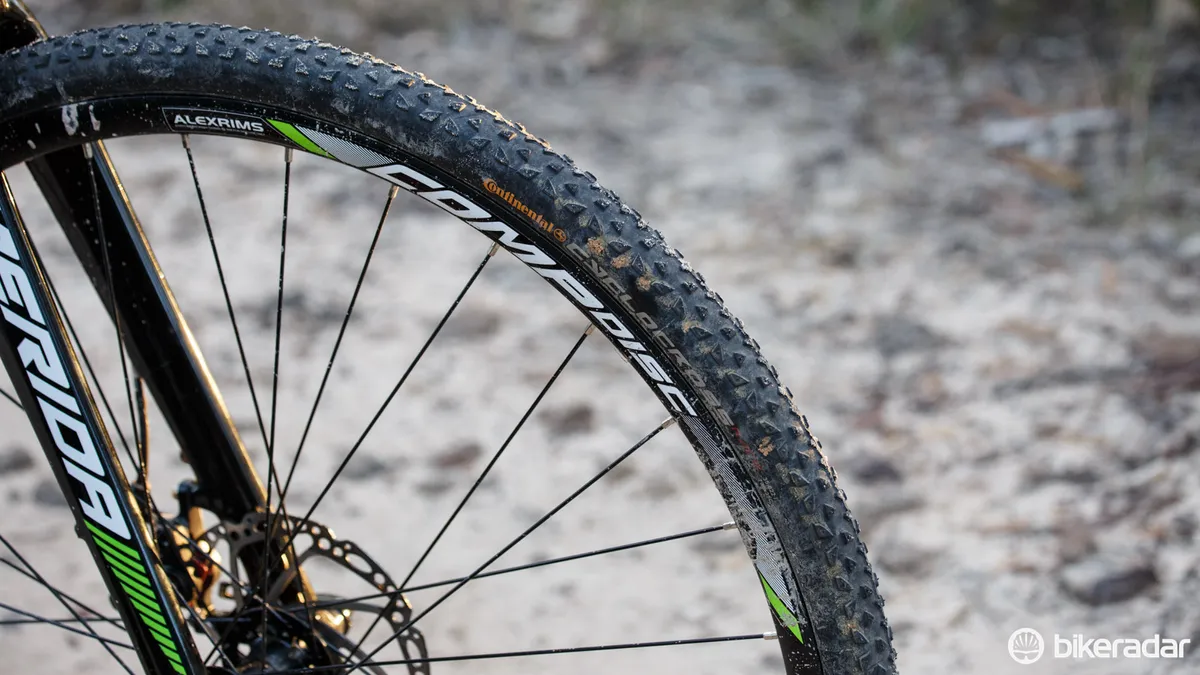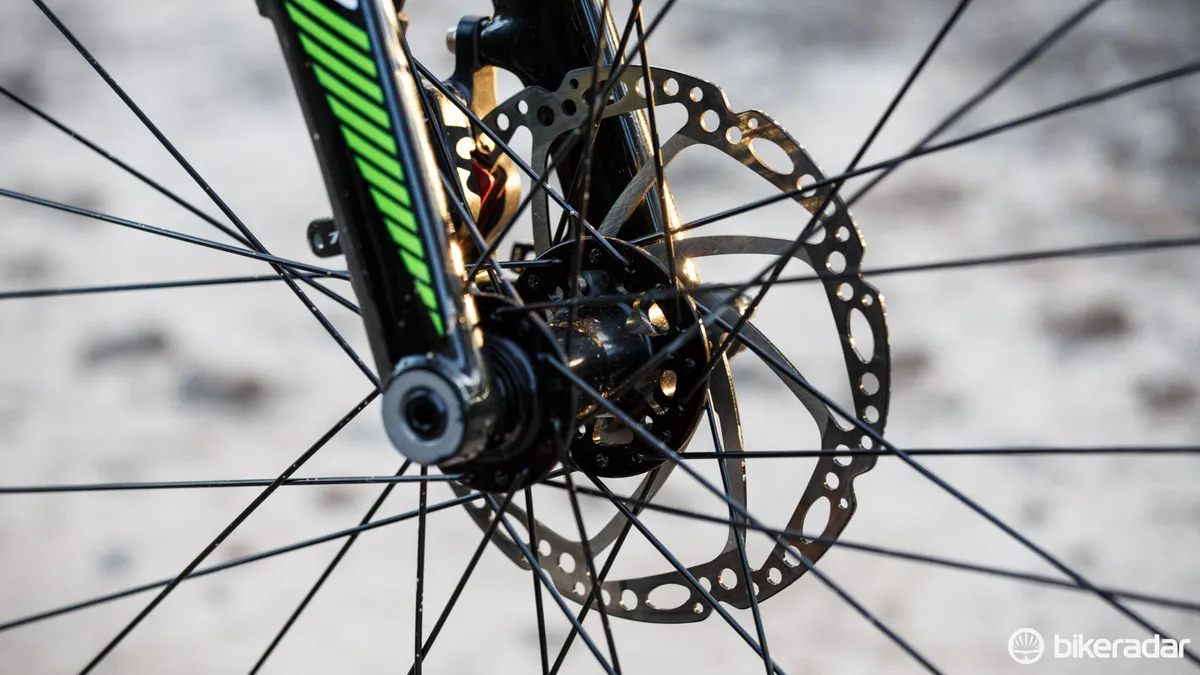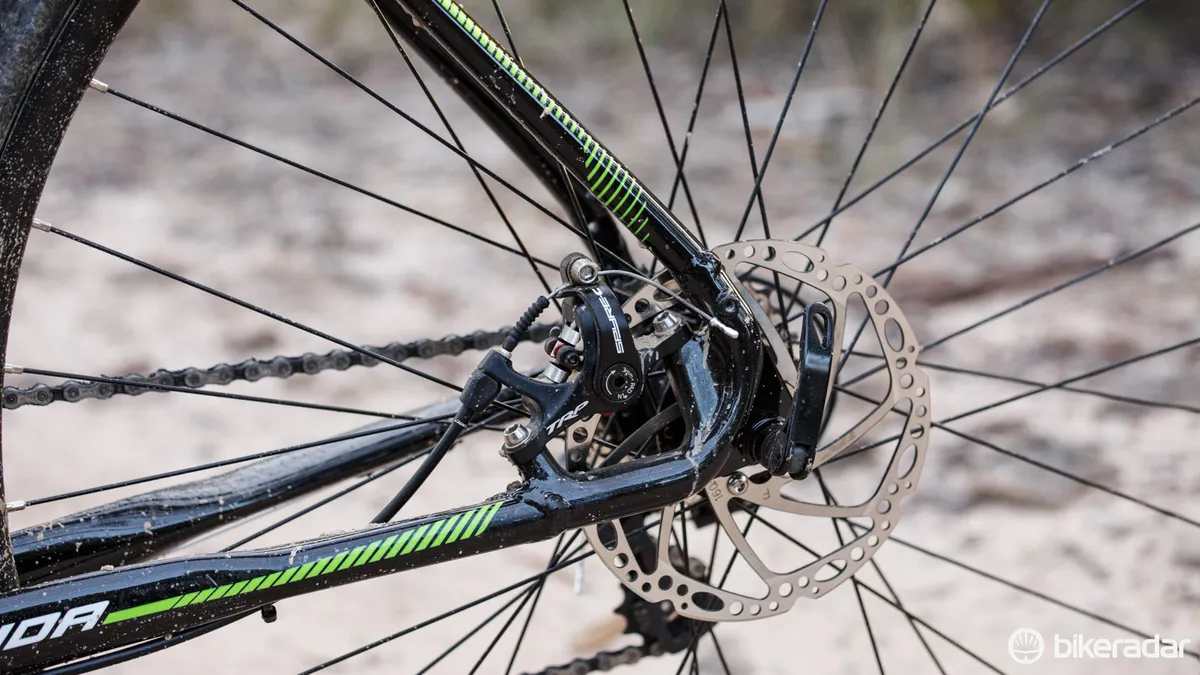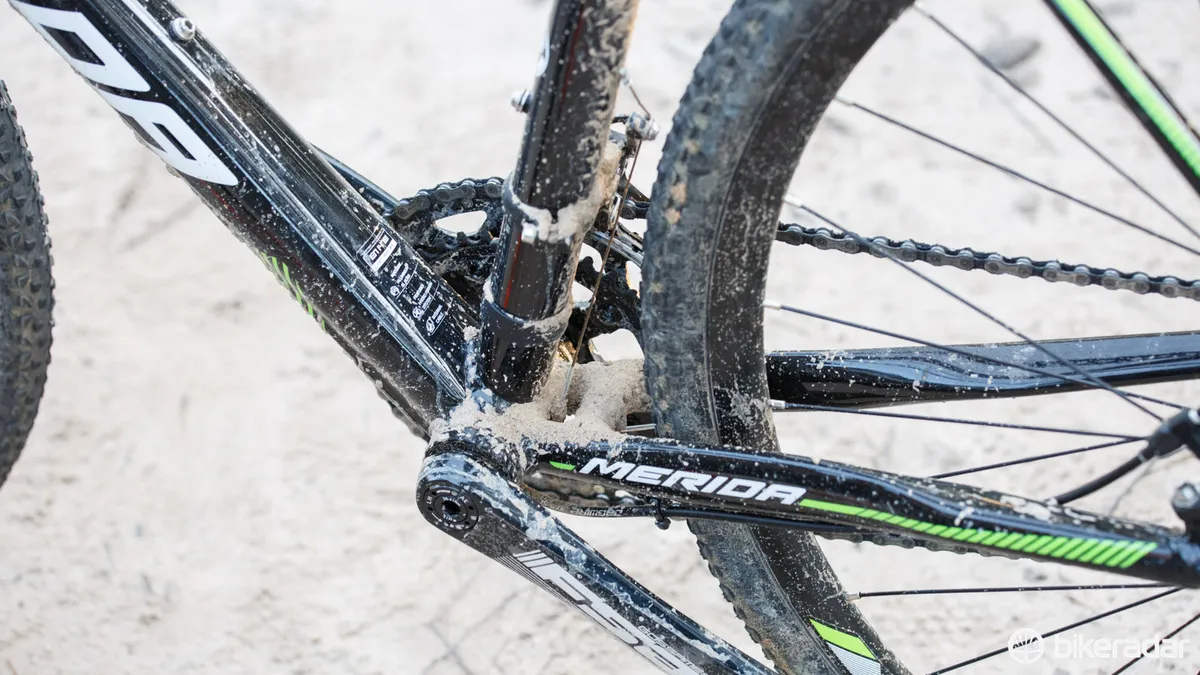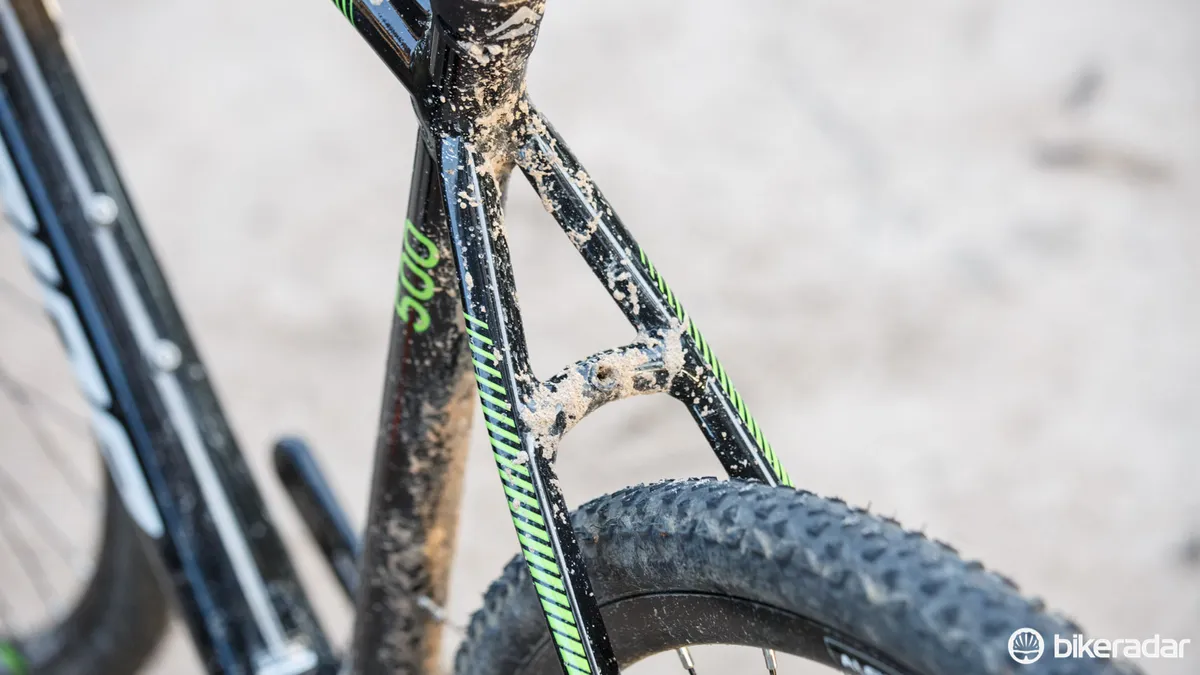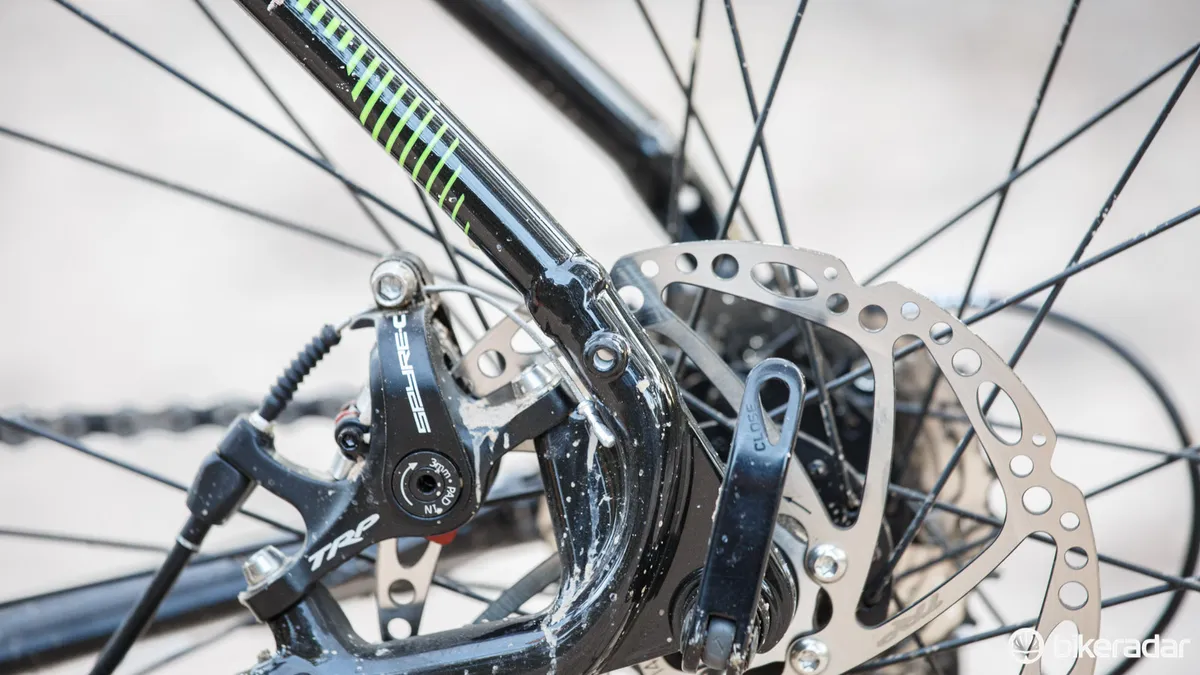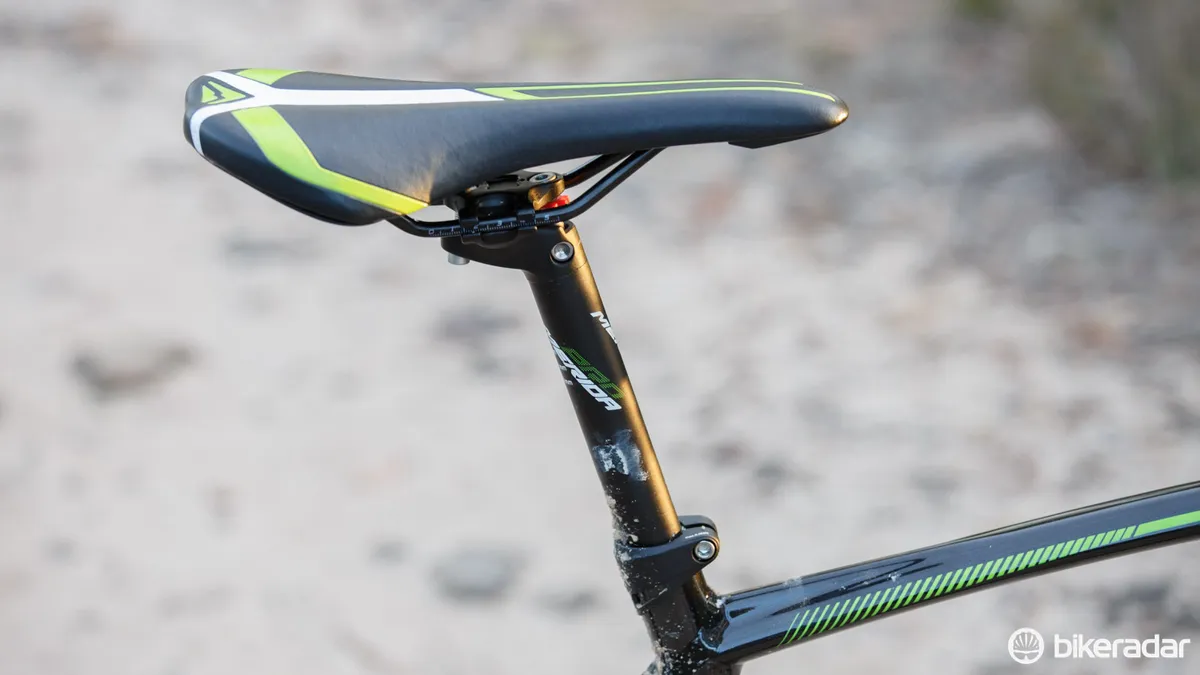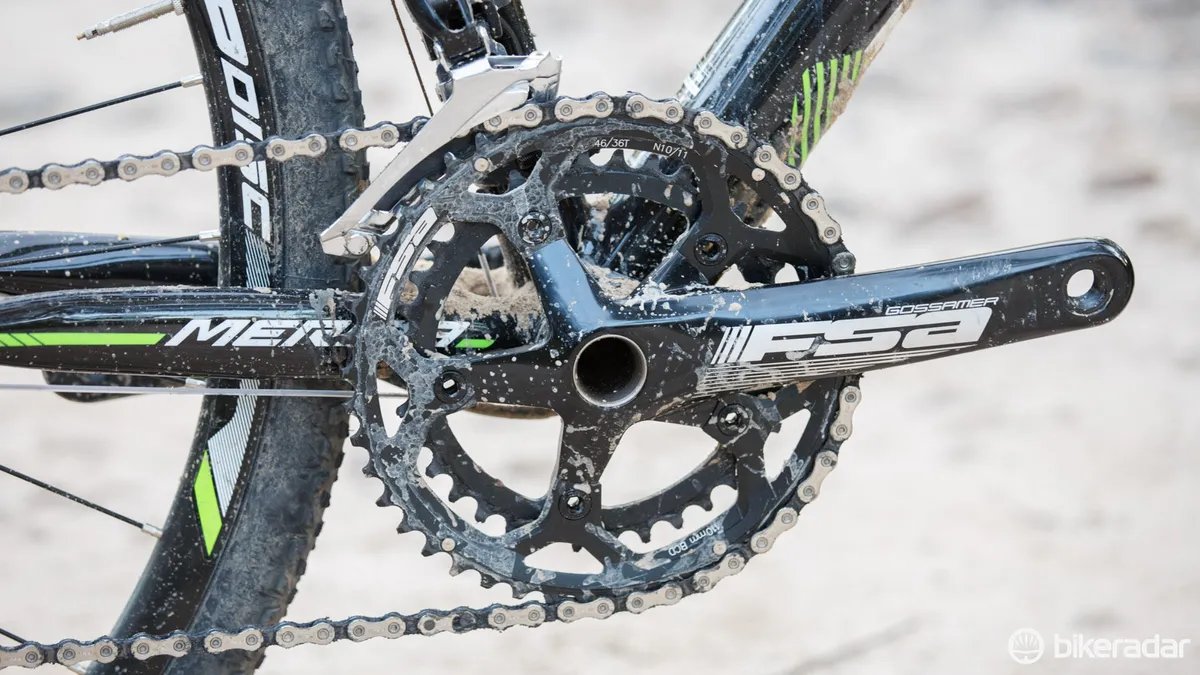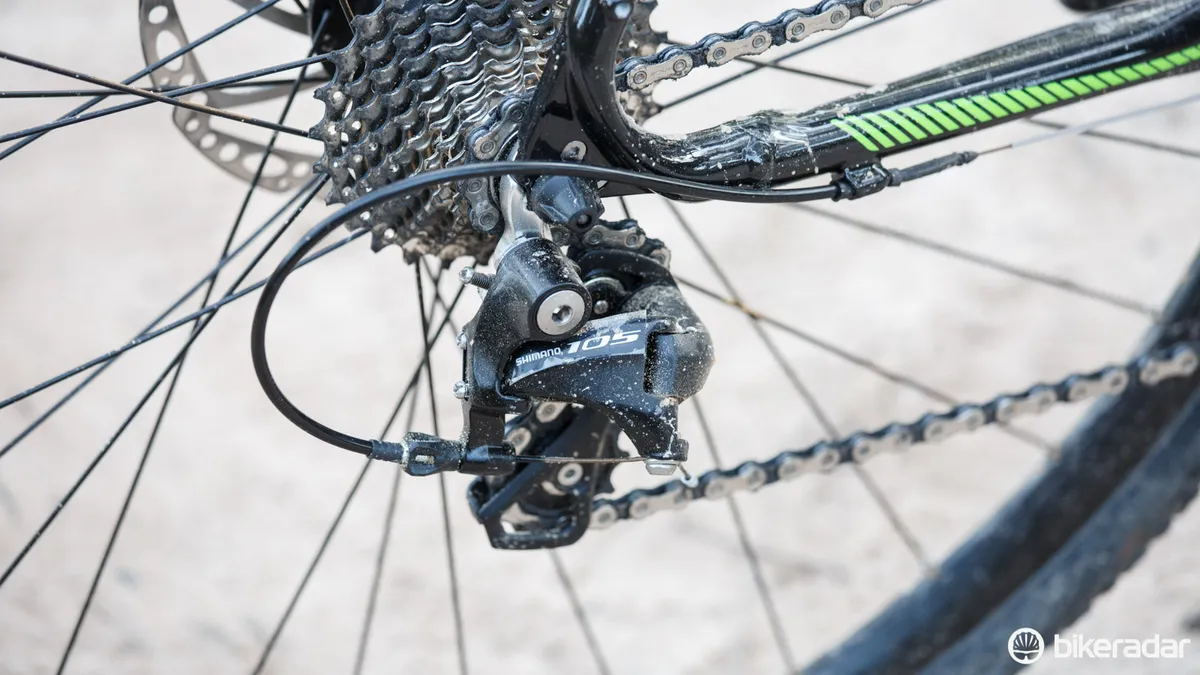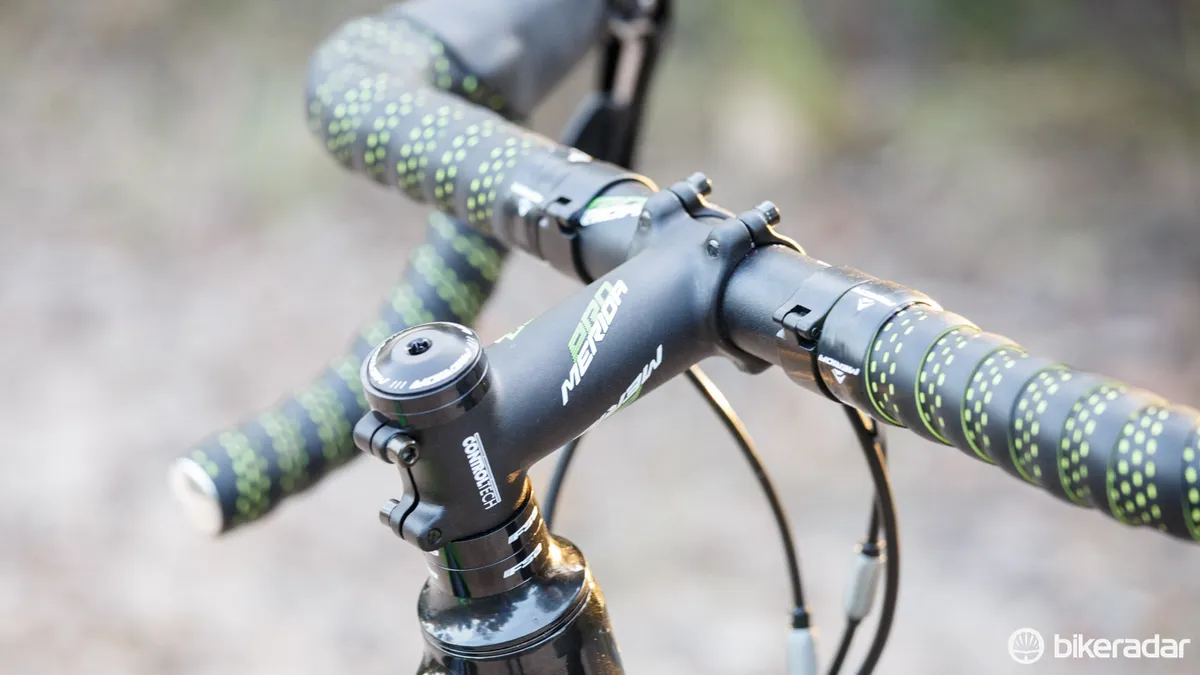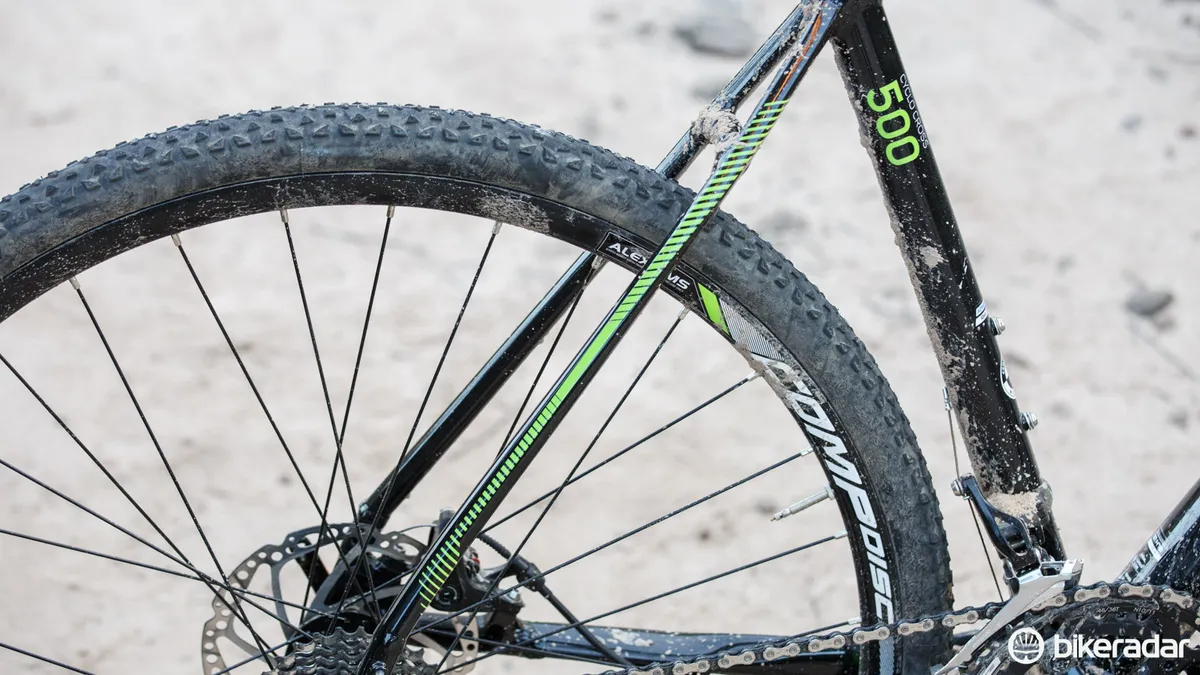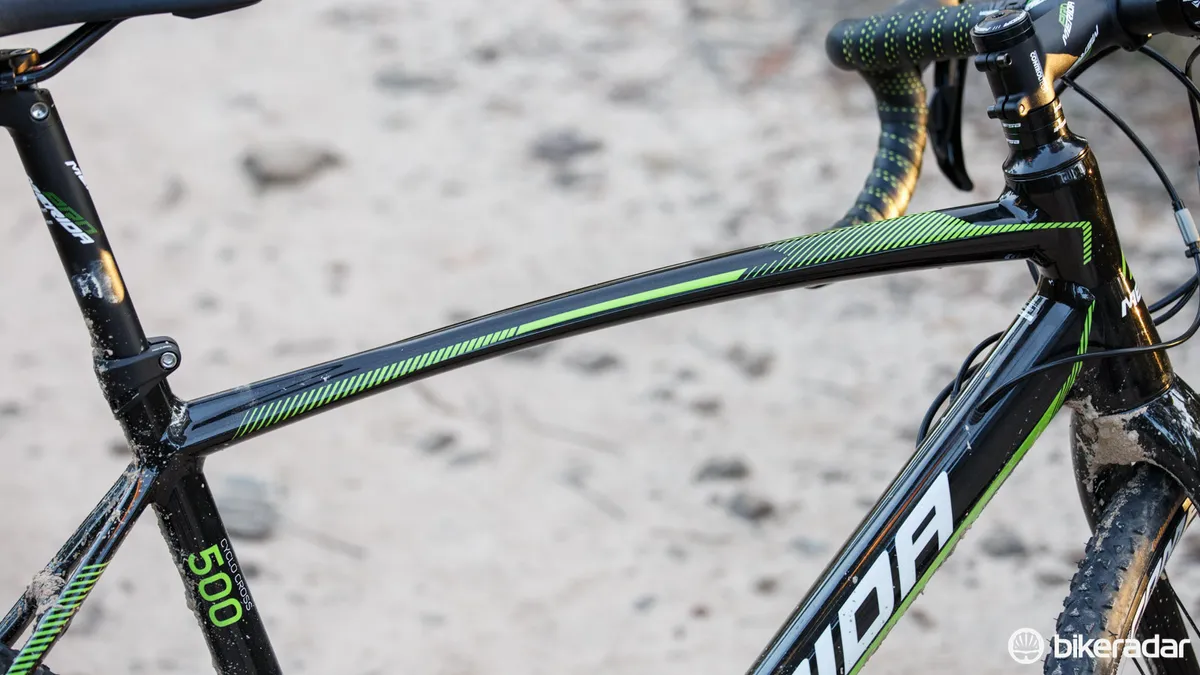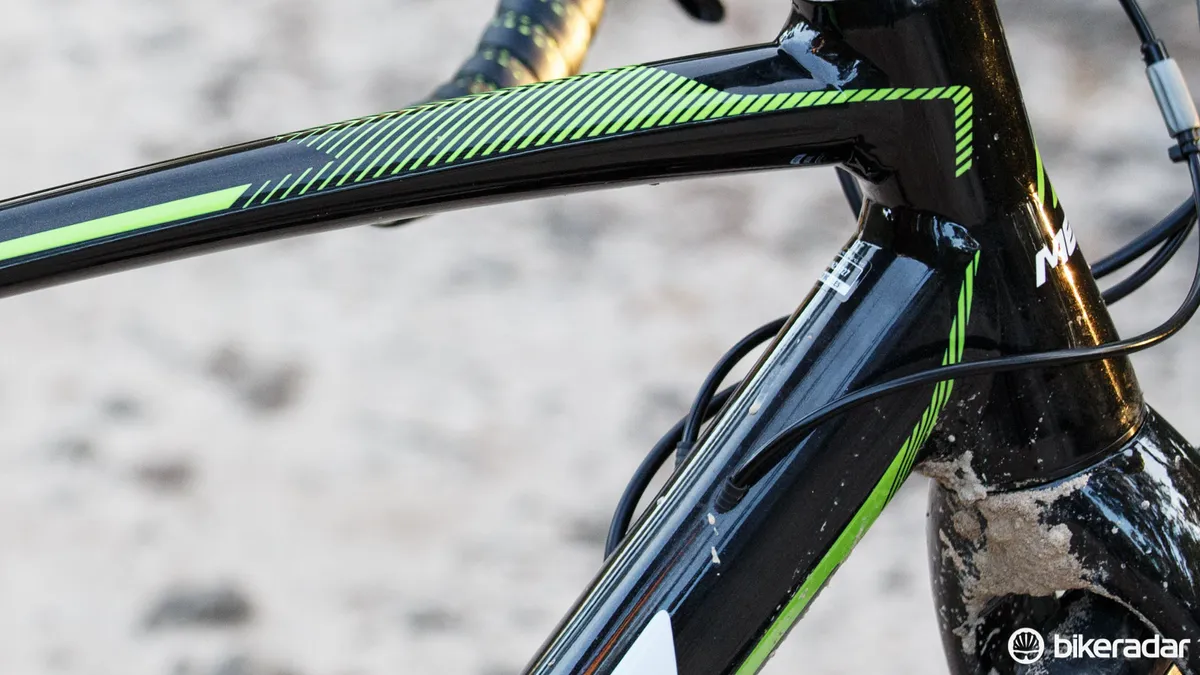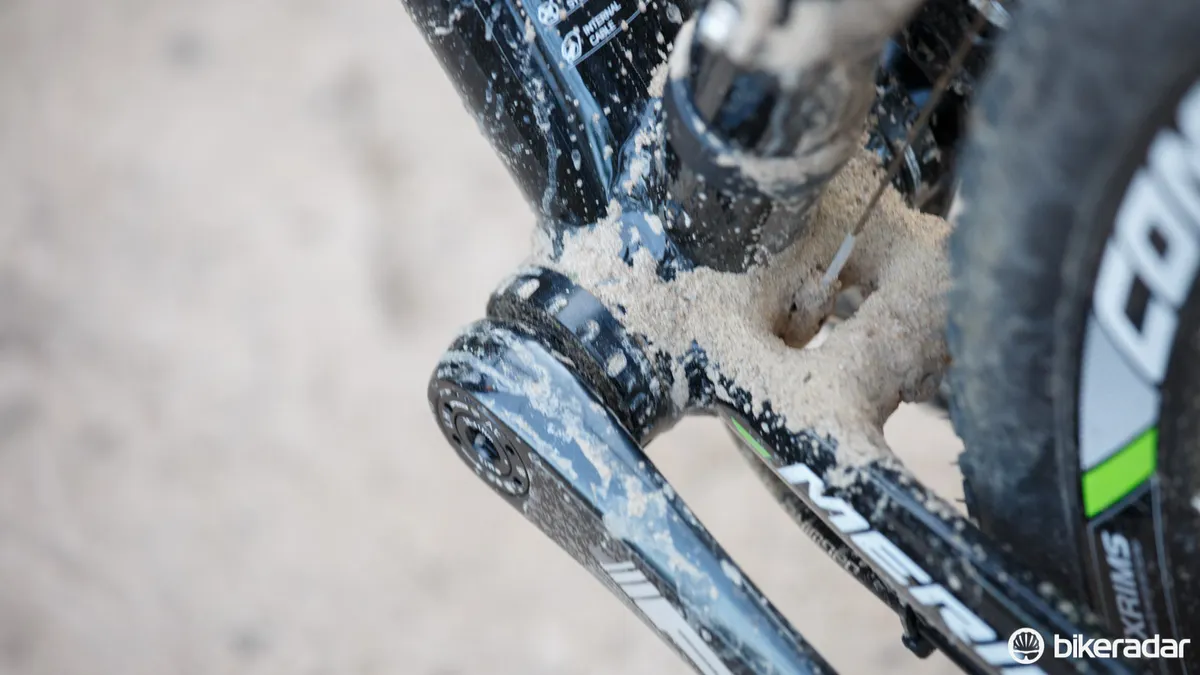In just a few short years, cyclocross has matured from a Eurocentric winter activity into a widely known cycling discipline, with most brands offering a range of suitable bikes.
More recently, the growth in related categories such as gravel grinding, and the demand for lighter weight commuter rides, has seen entry-level cyclocross bikes find a large market beyond those looking to just race.
Taking such growth on board, Merida introduced a new pricepoint cyclocross range for 2015. We requested a Cyclo Cross 500, which sits in the middle of the lineup, for review – and have since been racking up the miles on our local grass courses, mountain bike tracks and even in an urban scavenger hunt adventure.
- Highs: Elegant frame, stellar fork, reliable kit
- Lows: High weight (comes with the price), top-mount brake levers spoil brake feel, stock treads too wide for racing
- Buy if: You’re seeking a versatile 'cross bike that’s well-suited to doing more and going further than just racing
Frame: No corner cutting from Taiwanese mega-manufacturer
It’s common for a bike of this level to show that money's been invested in the components, while corners are cut on the frameset where it’s likely to go unnoticed by less experienced eyes. However, this just isn’t the case here – an impressive alloy frame and full-carbon fork form the basis of the CC 500.
The chassis is constructed from Merida’s premium ‘Prolite 66’ triple butted tubing; the frame shapes are then wildly manipulated with pressurized oil into forms that closely resemble those of a modern carbon frame. Furthering the material confusion are the smooth robotic welds covered in gloss black paint.
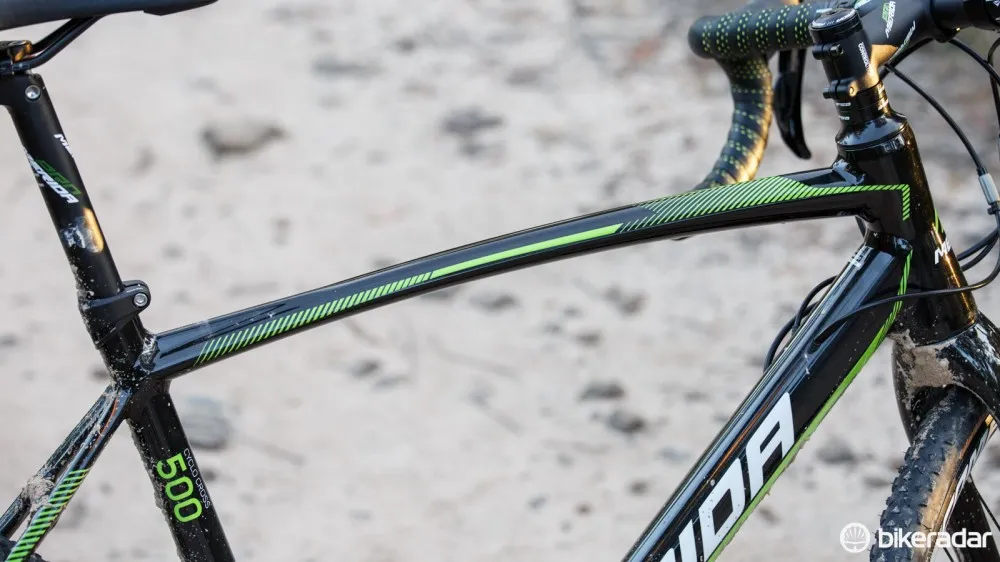
The CC 500's flat, curved top tube – alloy manufacturing has come a long way
Perhaps most notable is the curved and flattened top tube for easy shouldering. Flowing on from this are similarly styled seat- and chainstays, which Merida dubs ‘Flex Stay’ – something designed to promote vertical flex for increased bump compliance.
With the frame set up for disc brakes only, all cables are run internally through the down tube, with the top tube kept free of complications. Slightly unusually, the cables enter from behind the head tube, something that keeps them away from your body when shouldering the bike in run-ups.
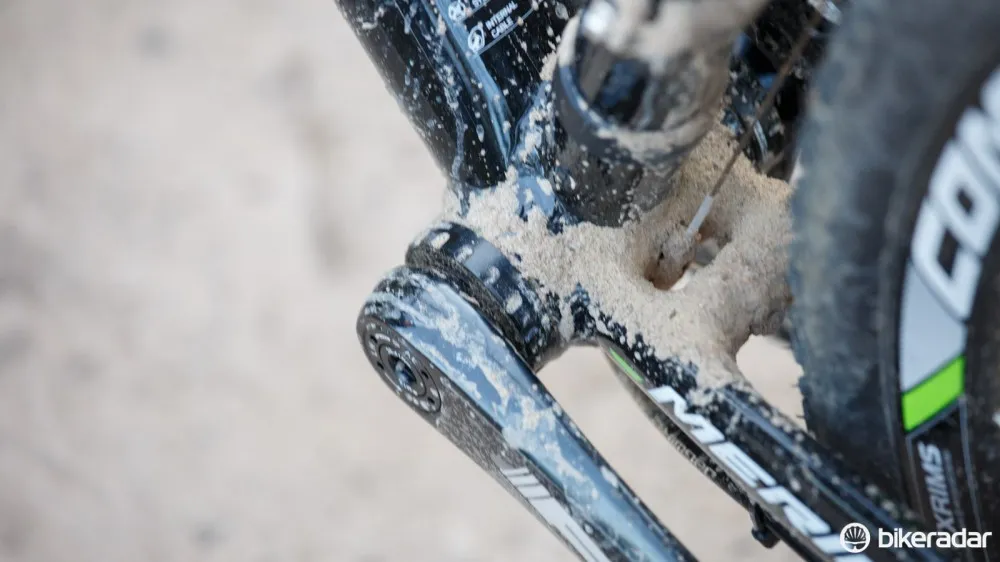
The 'old' threaded bottom bracket shells are now the heavier and more expensive way of doing things, but we still prefer them
Despite its up-to-date construction, Merida has managed to keep a few more traditional compatibility standards in the frame. The English threaded bottom bracket is an example of this – and will allow for easy and cheap servicing down the track. A standard quick release rear dropout is another, and it serves its purpose just fine.
Proving the Cyclo Cross 500 is capable of wearing multiple hats, the frame and fork feature threads to accept fenders (or mudguards, if you're a UK reader) or even light panniers. Additionally, two water bottles can be carried within the main triangle.
Sitting up front is the aforementioned full-carbon fork, which wouldn’t look out of place on a bike costing three times as much, especially given the inside-leg brake hose routing. In addition to the tapered steerer, a 15mm Maxle thru-axle is provided to ensure tracking stiffness. It’s the same axle system found on many premium mountain bike suspension forks.
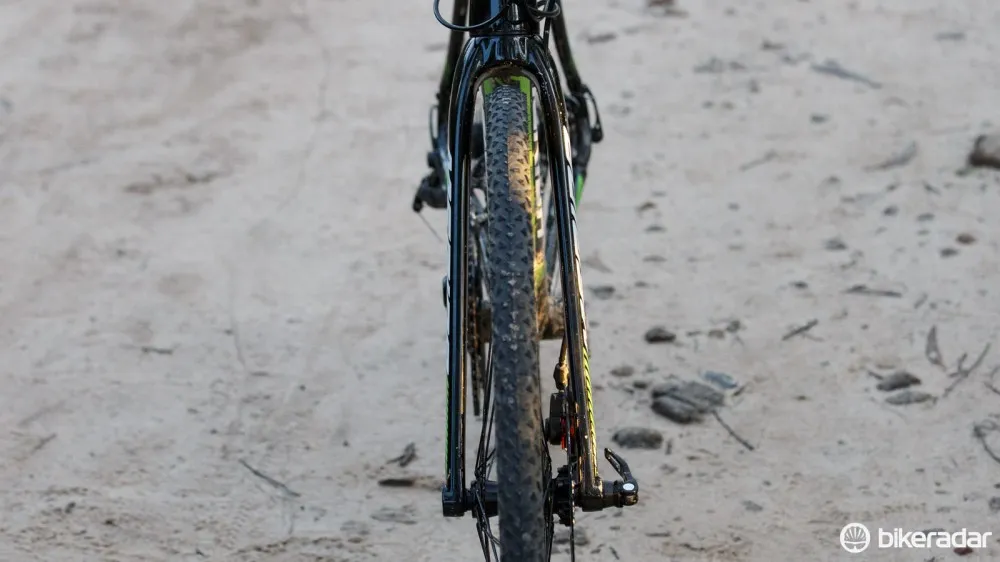
The fork offers a wide stance with plenty of clearance
The fork offers plenty of clearance around the 35c tyre with room to spare for something larger again. Out back, there's plenty of room surrounding the stock rubber, but the chainstay width is likely the limiting factor for going much wider.
Equipment: Durable and well-functioning parts mix, but the scales show budget restraints
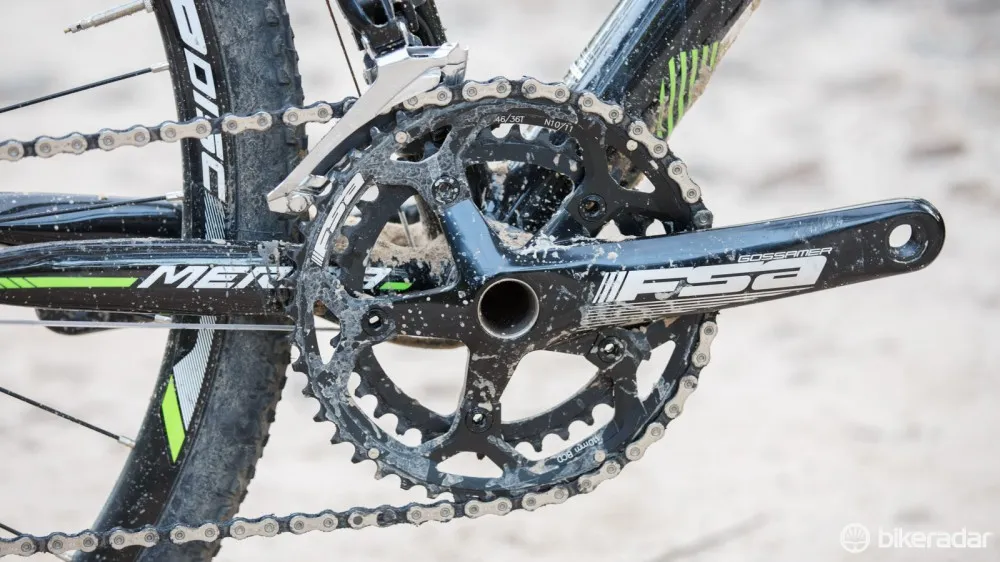
Set up with 'cross specific 46/36t chainrings, the FSA cranks are rather basic but give little reason for complaint. They're matched to a Shimano 105 11-speed 11-28t cassette at the rear, which is perhaps the most common ratio setup found on cyclocross bikes today.
Shimano’s ever-trusty 105 derailleurs and shifters handle switching between gear ratios. Bumpy run-ups can easily bounce a chain off its ring and so a basic plastic chain catcher has been provided on the seat tube to prevent the dreaded chain in the bottom bracket.
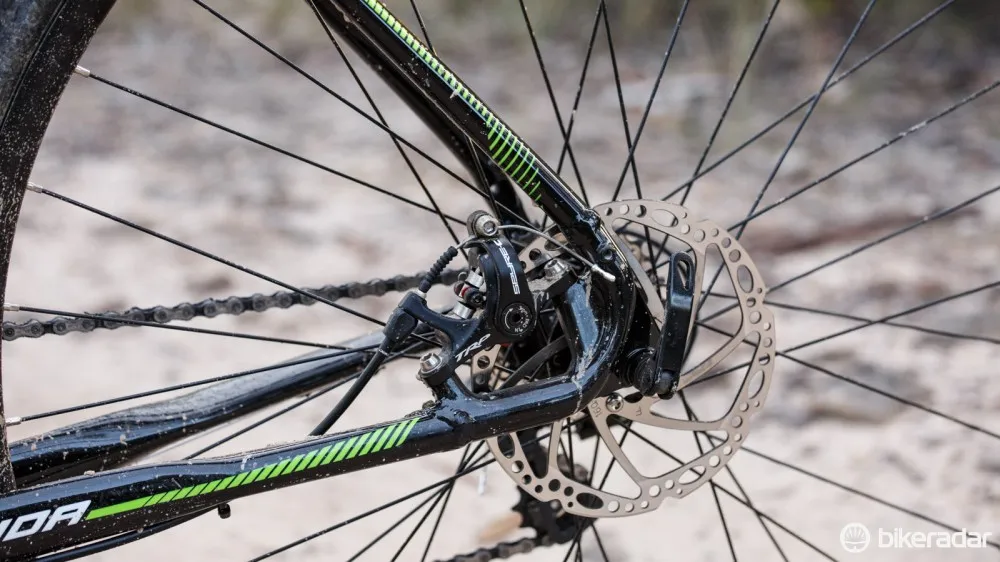
Plenty of good things about these brakes – but the setup spoiled them
Not often do we have a component that’s both the highlight and a lowlight – but that’s exactly how the disc brake setup left me feeling. TRP's Spyre mechanical brakes are a truly great product and offer dependable brake control when needed most; however, I just couldn’t get along with the secondary top-mount brake levers, and found they came at a cost to brake feel.
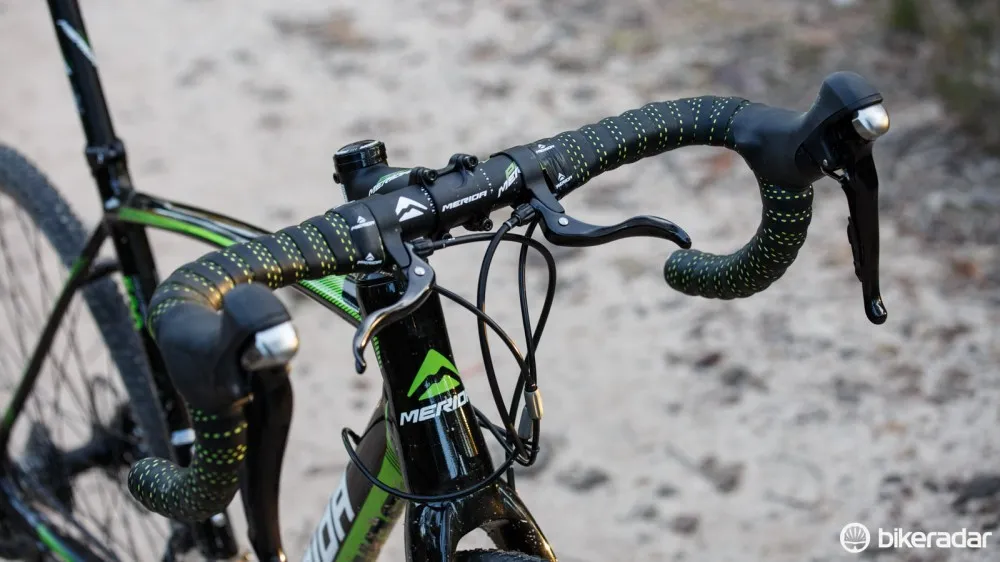
The additional top bar levers add a break and slight kink to the cable that we just couldn't overlook
Even though Merida has used a nice compressionless Jagwire brake housing, the top mount levers just add a little much friction and compression. Additionally, the housing coming from these levers tended to tangle on each other, meaning that operating one brake would often automatically pull on the other too.
Adding to the issues, the Shimano shifters aren't designed to handle excess cable friction and so tend to rattle when the return spring tension is overcome – it's something we recently pointed out in our review of the 2016 Giant Defy 1 Disc, which happens to use the same 105 shifters and TRP brakes.
The fix was to remove these top bar levers all together, and enjoy the smooth and nicely controlled braking offered by an unbroken connection from the Shimano levers to the TRP calipers.
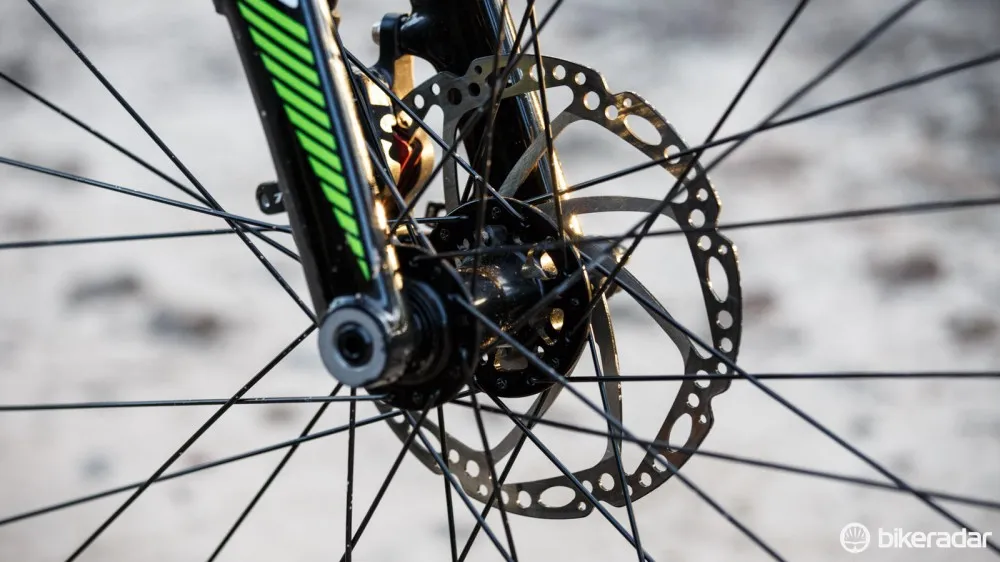
Cartridge bearing hubs are a welcome addition to a bike that's likely to see rotten conditions
While they're perhaps on the generic side, the 17mm (internal) width Alex disc-specific rims do a respectable job of adding volume to the already wide Continental Race 35c rubber. These slightly portly rims are laced to unbranded sealed (cartridge) bearing hubs – something that should prove durable and serviceable if the need arises. A high 32 spoke count front and rear makes for a strong and stiff build that’s sure to suit even heavier riders nicely.
Merida fills the rest of the build with its own branded components. These include a comfortable short-reach handlebar and generously padded synthetic bar tape.
Out back, the slender 27.2mm alloy seatpost doesn’t do much for comfort, but its twin bolt clamp can handle the full force of a misjudged remount; while the flat-shaped Merida saddle proved rather comfortable with its 145mm width.
Ride and handling: Sporty without elite aggression
Given this is an entry-level bike; the performance on tap from the frameset is quite astonishing. Here, large tubes do well to resist flexing under hard efforts, but remain compliant enough that your body isn’t screaming for the end.
It’s by no means the smoothest 'cross bike to have fallen into BikeRadar Australia's clutches, but remains nicely agreeable for an alloy frame. Even riding rocky trails is met with a decency that means you can remain seated on the flats and climbs.
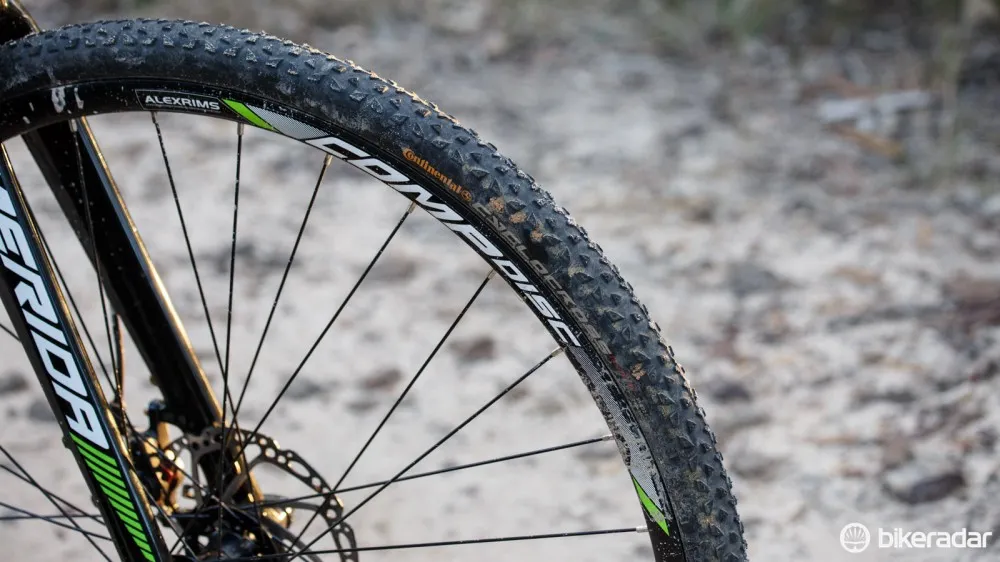
Versatile and wide rubber helps in the comfort game
The frame can’t take all the credit though – the wide 35c Continental rubber, inflated on medium-wide rims undoubtedly removes a good deal of the sting. These carry plenty of shock-absorbing volume, though it's worth noting that they also happen to be too wide for UCI-sanctioned racing. The folding casing is also a little on the lightweight side, and one heavy rock strike had us replacing the inner tube.
Up front, the thru-axle fork does well to keep the wheel (and rider) pointed where it’s told. Switching from a quick-release equipped 'crosser, there’s a notable difference and we found ourselves charging over roots and around sketchy corners with improved confidence.
While the geometry has racing spirit, it’s not nervously aggressive. Most notable are the 425mm rear chainstays, which make it easier to tilt the bike into a manual or flick the rear around corners.
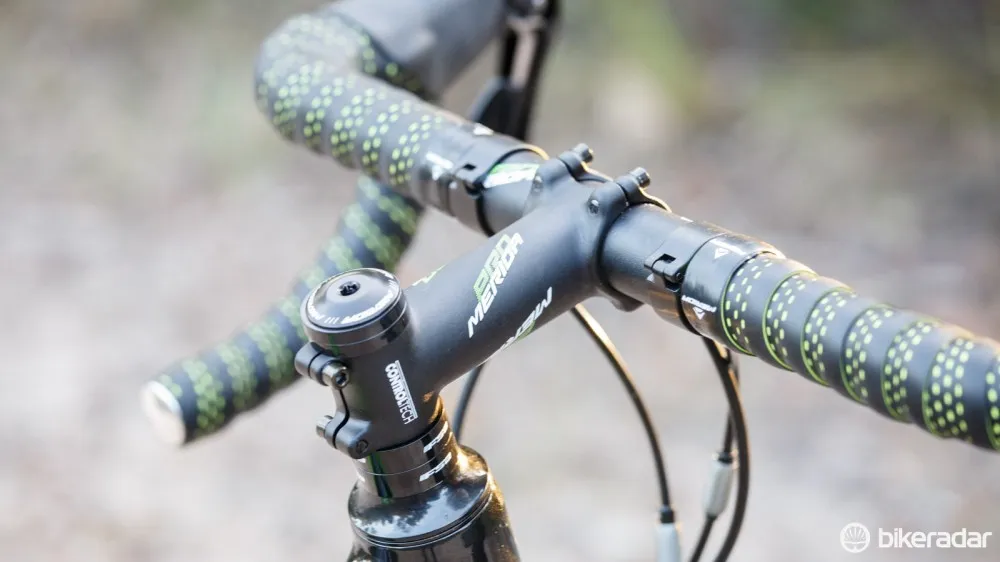
There's 60mm of headset spacer height to play with
The stock stem length and generous stem spacers give a more upright position that will suit newer riders well. That said, there’s plenty of room along the carbon steerer tube to achieve an aggressive riding position.
With a bottom bracket height that’s a few mm higher than some other big brands' options, we found ourselves needing to tip the bike into corners just a little more. The upside to this is that ground clearance is slightly improved, and pedal strikes off-road were less common.
Where the frame and fork don’t play around with your expended energy, the same can’t be said for weighty wheels and components that lead to a 9.7kg weight (without pedals). Here, the continuous acceleration that is cyclocross racing will quickly wear you down as you look to spin the wheels back up to speed, or run the bike up stairs. This is absolutely common for the asking price, and at least the frame/fork are deserving of weight saving upgrades in the future.
Beyond our issues with the top mount brake levers and treads a morsel too wide for legitimate racing, the Merida Cyclo Cross 500 offers stellar value for its category. It’s a bike we’d happily recommend to someone looking to get starting in the sport of cyclocross – and one that carries few excuses, with an upgrade to lighter wheels.
